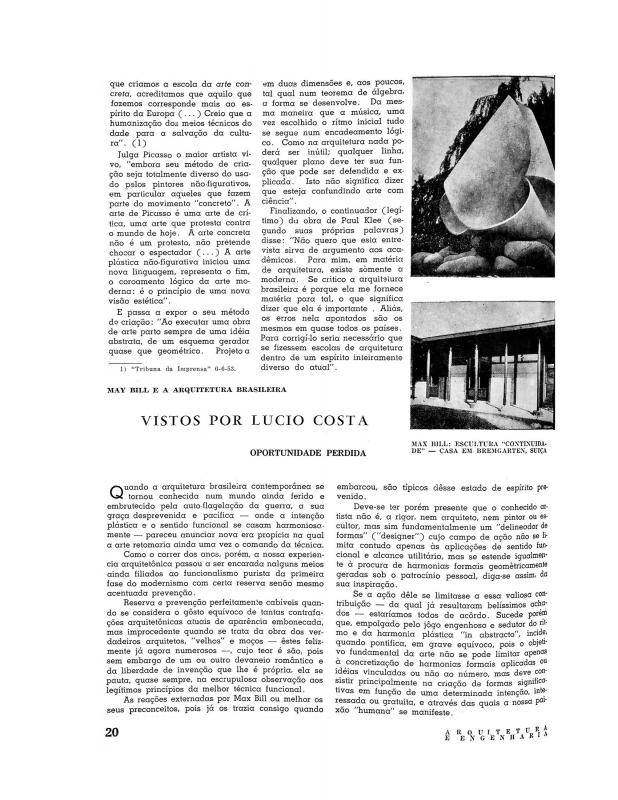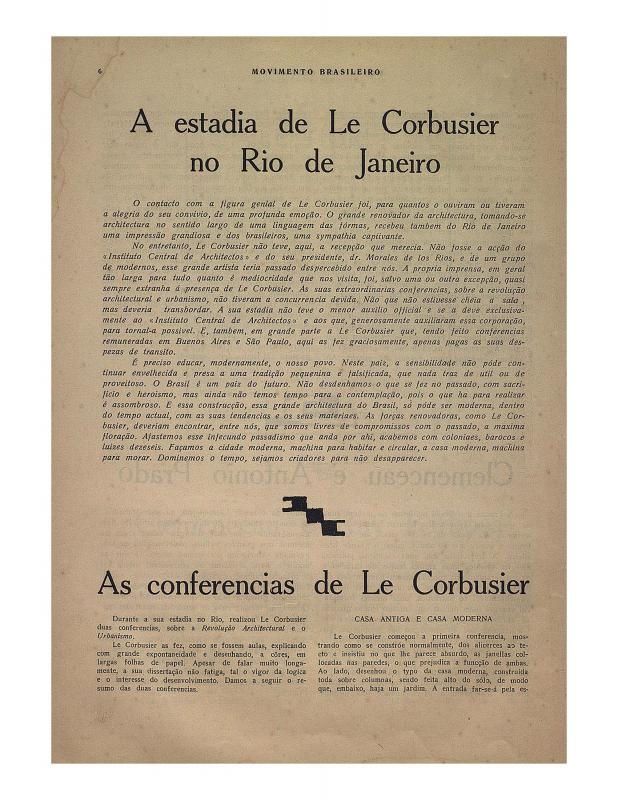Although the author is anonymous, this article reflects the concerns circulating in Brazil about the new ideas being advocated in the fields of architecture and urban planning. The cutting edge model proposed by the famous Swiss architect Le Corbusier (Charles-Édouard Jeanneret-Gris, 1887–1965) in his radical Plan Voisin (1922–1925), which sought to redesign the heart of Paris, resonated far and wide. The goal of his rationalist approach was to create architectural solutions to improve living conditions for people crowded together in urban slums. The suggestion that Le Corbusier might come to Brazil, and especially to Rio de Janeiro, therefore sparked a great deal of interest in the press.
On the subject of the Ministério de Eduçação e Saúde (MES) (1936–1943), the modern architecture project proposed by a group of Brazilian architects who were advised by Le Corbusier, see the essay by Lucio Costa “A solução definitiva” [ICAA digital archive, doc. no. 111008] and the article “Max Bill e a arquitetura brasileira vistos por Lucio Costa: oportunidade perdida,” in which Costa takes a controversial view concerning the MES (doc. no. 1110331).
This article was published in Movimento Brasileiro, a magazine devoted to criticism and news about politics and art, which appeared from 1928 through 1929 in Rio de Janeiro. During its first year in print (1928) it was just called Movimento, but was always edited by Renato [de] Almeida, who was a member of the group that was involved in the 1922 Semana de Arte Moderna.
Movimento Brasileiro published two articles that reported on the interest being stirred up by the arrival of the famous architect. In 1929, under the auspices of the Instituto Central de Arquitetos (in what was then the capital of Brazil), Le Corbusier discussed his ideas in two lectures called “Revolução arquitetural” and “Urbanismo”—see “As conferências de Le Corbusier” (doc. no. 780364) and “O sentido moderno do Brasil” (doc. no. 781189).



